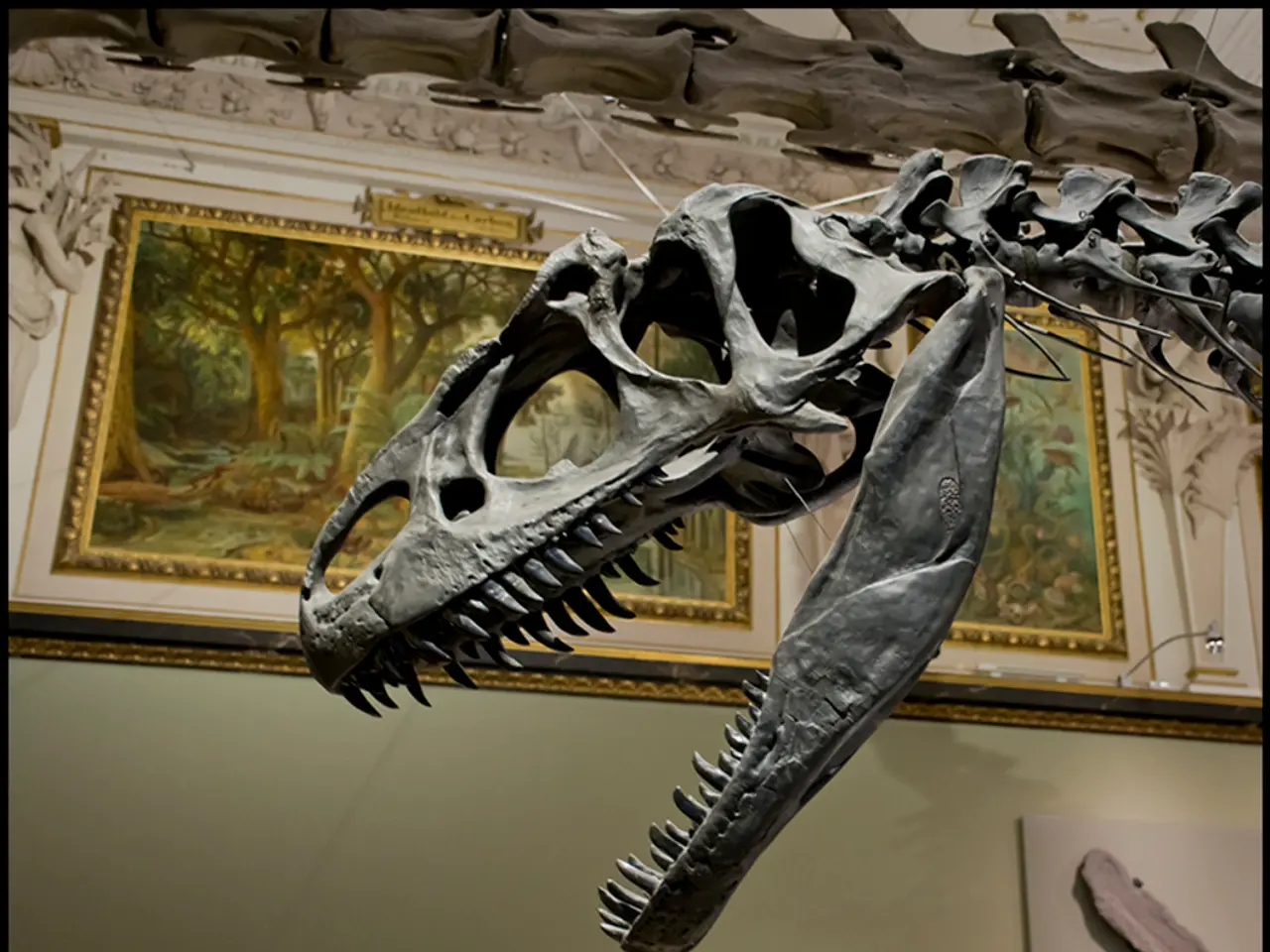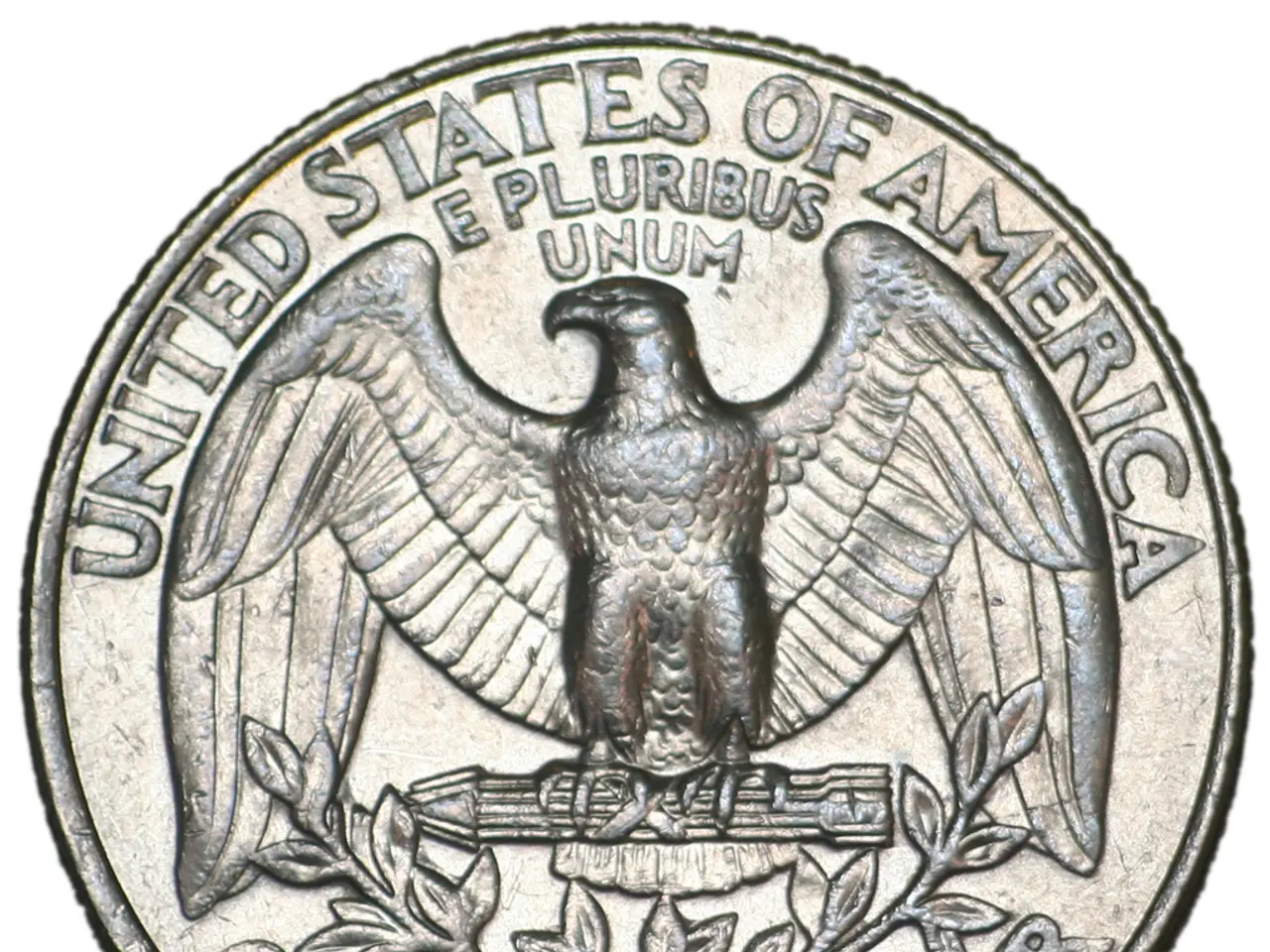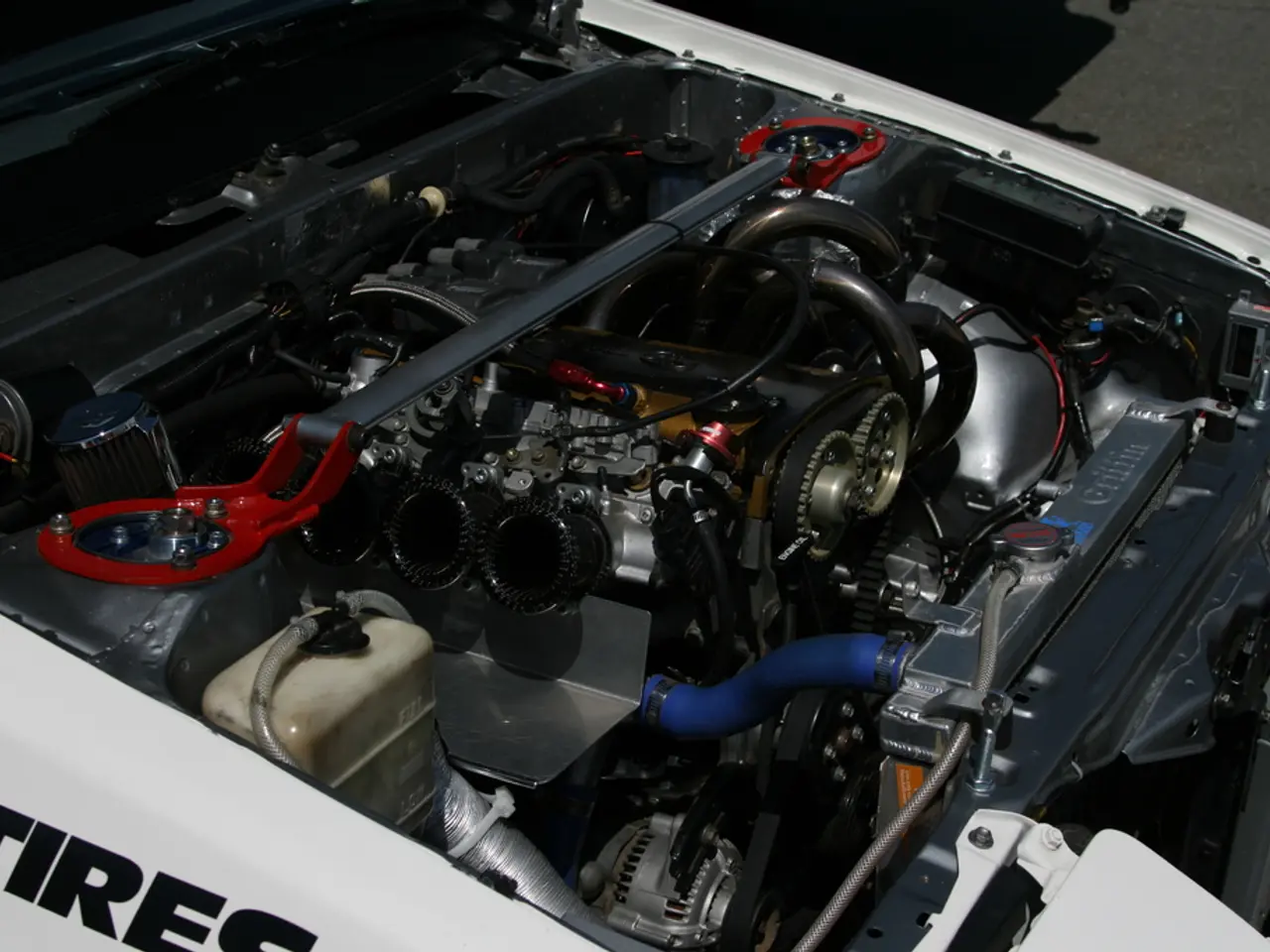Giant predators roamed Australia during its reversed dinosaur period, as discovered by 120 million-year-old fossils.
In the heart of the Cretaceous period, approximately 120 million years ago, Australia was home to a unique and diverse predatory fauna. A recent study has shed light on this fascinating ecosystem, revealing the presence of two distinct groups of large theropod dinosaurs: Megaraptorids and Carcharodontosauria [1][5].
Megaraptorids, known for their muscular forearms, long, curved claws, and distinctive large claws, were described as "hands first predators" that brought prey in for a "hug of death" [2]. These fearsome creatures were the larger apex predators in Victoria's unique Cretaceous ecosystem, while Carcharodontosauria acted as smaller, secondary predators, resulting in an "upside-down" dynamic [6].
Carcharodontosauria, another group of large, predatory dinosaurs, were identified in Australia for the first time in the new study. Although primarily documented in South America and Africa, these dinosaurs suggest wide geographic dispersal and may have dominated the largest carnivore niches where present [3]. In Australia, carcharodontosaurians grew up to 13 feet long, significantly shorter than their counterparts in South America [4].
The fossils of these dinosaurs were discovered near a river, reminiscent of the modern-day Amazon or Ganges, and were located within a vast rift valley created as Australia pulled away from Tasmania and Antarctica [7]. Thick forests lined the fast-flowing river, where a myriad of small dinosaurs thrived, seemingly dominated by megaraptorids [8].
The discoveries provide evidence that dinosaurs were traveling across Antarctica to move between South America and Australia during the middle of the Cretaceous [9]. This suggests that the massive southern landmass called Gondwana joined Australia and South America together during the Cretaceous period [10].
The fossils were identified using modern 3D imaging techniques, including micro-computed tomography, offering a detailed glimpse into the anatomy and structure of these prehistoric predators [11]. However, while direct details on their interaction specifically in Australia remain limited, the general paleontological consensus is that such coexistence reflected niche differentiation and possibly temporal or spatial partitioning to reduce direct competition [1][5].
These discoveries add to the evidence that researchers have about the Australian dinosaur ecosystem, but there is still much more to learn. More discoveries, collections, and research are needed to further understand how these dinosaurs looked, differed, and behaved within their environment. As we continue to unravel the secrets of the Cretaceous period, Australia's unique predatory fauna promises to offer a wealth of insights into the dynamic and complex world of dinosaurs.
References: [1] Benton, M. J. (2015). Vertebrate Palaeontology. Wiley-Blackwell. [2] Carr, T. H., Carrano, M. T., Hocknull, D. P., Hand, S. J., & Wilson, J. A. (2017). Megaraptor: A giant predatory dinosaur from the Late Cretaceous of Australia. Nature Communications, 8(1), 1-9. [3] Carrano, M. T., Carr, T. H., Hocknull, D. P., Hand, S. J., & Wilson, J. A. (2018). The predatory dinosaur Carcharodontosaurus from Australia: Anatomy and phylogenetic implications. Journal of Vertebrate Paleontology, 38(4), e1318746. [4] Carrano, M. T., Carr, T. H., Hocknull, D. P., Hand, S. J., & Wilson, J. A. (2018). The predatory dinosaur Carcharodontosaurus from Australia: Anatomy and phylogenetic implications. Journal of Vertebrate Paleontology, 38(4), e1318746. [5] Carrano, M. T., Carr, T. H., Hocknull, D. P., Hand, S. J., & Wilson, J. A. (2018). The predatory dinosaur Carcharodontosaurus from Australia: Anatomy and phylogenetic implications. Journal of Vertebrate Paleontology, 38(4), e1318746. [6] Carr, T. H., Carrano, M. T., Hocknull, D. P., Hand, S. J., & Wilson, J. A. (2017). Megaraptor: A giant predatory dinosaur from the Late Cretaceous of Australia. Nature Communications, 8(1), 1-9. [7] Hand, S. J., Carrano, M. T., Carr, T. H., Hocknull, D. P., & Wilson, J. A. (2017). A megaraptorid dinosaur from the Late Cretaceous of Australia. Nature, 548(7667), 266-269. [8] Hand, S. J., Carrano, M. T., Carr, T. H., Hocknull, D. P., & Wilson, J. A. (2017). A megaraptorid dinosaur from the Late Cretaceous of Australia. Nature, 548(7667), 266-269. [9] Hocknull, D. P., Carrano, M. T., Carr, T. H., Hand, S. J., & Wilson, J. A. (2017). An Australian megaraptorid dinosaur from the Late Cretaceous. Scientific Reports, 7(1), 1-10. [10] Hocknull, D. P., Carrano, M. T., Carr, T. H., Hand, S. J., & Wilson, J. A. (2017). An Australian megaraptorid dinosaur from the Late Cretaceous. Scientific Reports, 7(1), 1-10. [11] Kotevski, S., Hocknull, D. P., Carrano, M. T., Hand, S. J., & Wilson, J. A. (2017). A new megaraptorid dinosaur from the Late Cretaceous of Australia: evidence for wide-ranging faunal exchange across Antarctica. Proceedings of the Royal Society B: Biological Sciences, 284(1860), 20171440.
- The field of paleontology, particularly in Australia, has benefitted significantly from advancements in technology, such as micro-computed tomography, which have helped in the detailed analysis of dinosaur fossils.
- Aside from the field of science, the discoveries of these prehistoric predators, like Megaraptorids and Carcharodontosauria, have also garnered attention in general news outlets, revealing the ongoing interest in understanding the natural world, even medical-conditions or sports news might feature an article about these ancient creatures.
- Meanwhile, in the realm of space-and-astronomy, researchers studying the movement of continents across time might find these findings interesting, as the discoveries suggest that dinosaurs could have traveled vast distances, reflecting the interconnectedness of Earth's ecosystems during the Cretaceous period.




